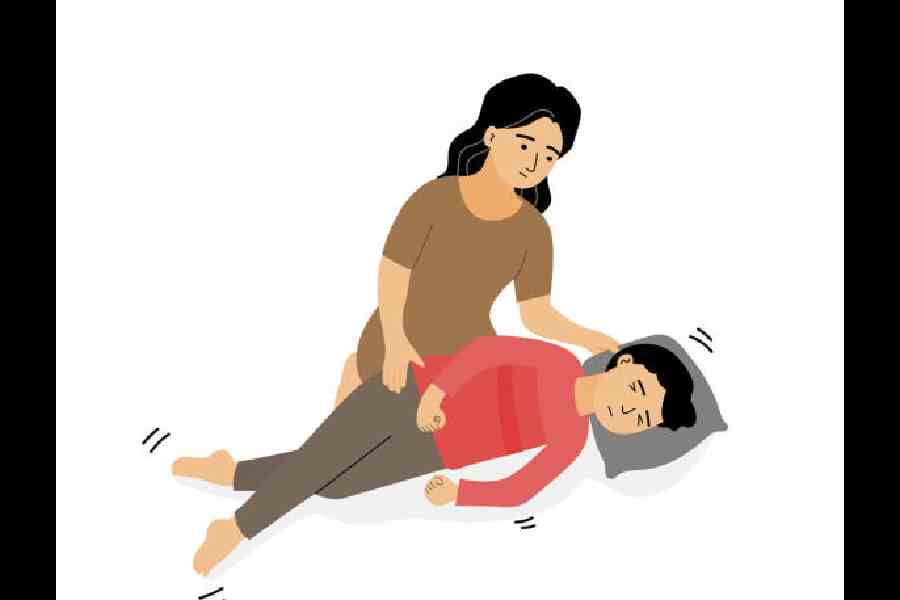In India, 6 per cent of the population has a seizure during the course of a lifetime. They have uncontrolled jerking of a part of their body or fall down because of the violent shiver in all four limbs. Their eyes may roll up; there may be frothing at the mouth and loss of consciousness. These episodes, though frightening to the bystander, usually last only a few minutes and are self-limiting.
The age at which these episodes start is usually under 10 years or over 60 years. In some children, from six months to five years old, the seizures may be precipitated by fever (temperature above 100.4°F). They usually outgrow these febrile episodes by the age of five. They do not have seizures without fever.
Seizures have a stigma attached to them. Sometimes, it is equated with mental illness or curses from ill-wishers. All kinds of magic potions, spells and quackery are tried on the unfortunate individuals. Sometimes, they are beaten and branded to prevent seizures.
What happens during a seizure?
The brain sends electrical signals to the muscles, initiating movement. When the signals stop, the muscles stop moving. Sometimes, uncontrolled rapid signals arise from an area of the brain and then spread, causing the muscles to move rapidly. These signals are triggered by chemicals in the brain. As soon as the chemical levels drop, the current stops and so do seizures.
The abnormal signals can arise because of a brain injury. It can be a birth injury, especially if it was an instrumental delivery, or be caused later by an accident or a fall. It may be because of brain infections like meningitis, encephalitis or a tumour. In older people, it may be due to mini strokes, where blood supply to an area of the brain is suddenly compromised. Even though the cause may differ, the mechanism is the same.
Seizures do not necessarily affect the whole body. In children especially, a petit mal seizure may just be a staring episode lasting a few seconds when the child is unresponsive. It may involve a repetitive movement like a salaam or falling forward. Only one limb or a part of the body may be affected, like an arm or the face. In adults, this is called a focal seizure.
Sometimes, people are able to anticipate the onset of a seizure as they have what is known as an aura. This is a peculiar sensation, like a sudden sense of fear or joy or a strange odour or taste, that appears unexpectedly before the seizure starts.
If a person is having a seizure, turn him or her on his or her side so that he or she does not choke. Move the person away from sharp objects so that he or she does not injure himself or herself. However, contrary to popular wisdom, do not try to place spoons or other objects in the mouth. Usually, seizures are self-limiting.
Initially, although seizures may appear typical, they need to be investigated. EEG, brain scans and blood tests are used to rule out
correctable causes of seizures, such as a tumour. The location of the focus releasing the signals can also be identified.
Treatments for seizures have to be individualised. One tablet or dose will not control seizures in all people. Tablets act only for a certain number of hours. Therefore, the pills must be taken at the same time every day. Missing doses can precipitate seizures. In children, the dosage is based on body weight, so as the child grows, the dosage may have to be increased. The newer tablets do not have many side effects. Treatment is usually continued for five years after the last seizure.
With proper treatment and control, adults and children with seizures can lead normal, productive lives.
The writer has a family practice at Vellore and is the author of Staying Healthy in Modern India. If you have any questions on health issues please write to yourhealthgm@yahoo.co.in











